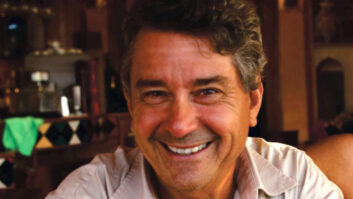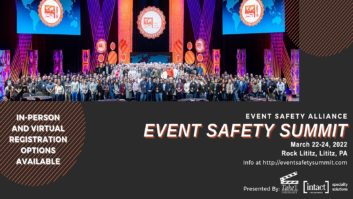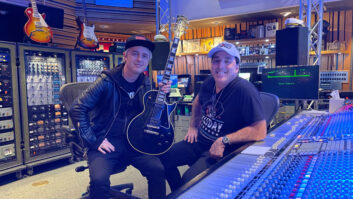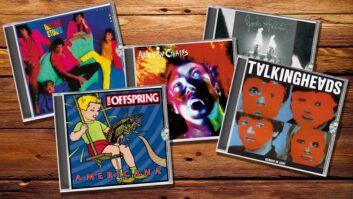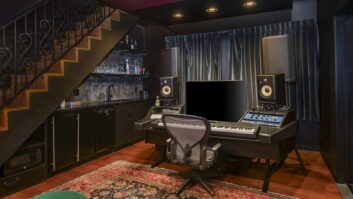 Way back in 1980, I knew that the personal computer would one day rule the world. I built an Apple II from a kit, including a 5.25-inch floppy disk drive, and started playing with the first computer-generated audio tones. The system was rudimentary, but I could see how this little box could be used to write letters, create spreadsheets and databases, and, of course, play music. The hardware was common, while the software could be application-specific. When Digidesign showed a prototype of Pro Tools at NAMM in 1991, my prediction began showing promise.
Way back in 1980, I knew that the personal computer would one day rule the world. I built an Apple II from a kit, including a 5.25-inch floppy disk drive, and started playing with the first computer-generated audio tones. The system was rudimentary, but I could see how this little box could be used to write letters, create spreadsheets and databases, and, of course, play music. The hardware was common, while the software could be application-specific. When Digidesign showed a prototype of Pro Tools at NAMM in 1991, my prediction began showing promise.
After I came back from the show, I brought management into the boardroom, drew a Mac, a mouse and a circle around it with a bunch of boxes. I suggested that it would be impossible for us to compete with Apple or Microsoft, so we should instead focus on products that would interface with their computers: microphones, speakers, amplifiers and acoustic panels. I was certain the price of computers and software would plummet before long and home studios would take over the world. This prediction came true some 10 years later. Did I invent anything? No. I simply paid attention to what was happening in the market.
Business clusters work in very much the same way. They’re circles of companies, brands and products that contribute to and benefit from each other’s presence. IBM, Microsoft and Apple in Silicon Valley spawned Google, Yahoo and Oracle. The retail music business is similar. Before real estate prices got out of hand, one would go to 48th Street in Manhattan to buy gear. Manny’s, Sam Ash, Rudy’s … all within a block. In London, Denmark Street continues the tradition; you can still find clusters of shops such as Rose-Morris, Hanks and Regent Sound, which also housed a studio where the Rolling Stones and David Bowie recorded. If you travel to Tokyo, the electronic shops are in clusters in Akihabara. In cities throughout Southeast Asia such as Singapore and Kuala Lumpur, there are multilevel malls that sell nothing but audio and video gear.
When I think of the Apple iPhone, I circle right back to the cluster. Is the iPhone special? No, it’s not really any better than other smartphones on the market. What distinguished it early on was its App Store and the thousands of apps available there. This time, software designers clustered around a platform, not a neighborhood.
Developing a product line follows the sane circular concept. At Radial, we started with a simple passive direct box. We then added an active DI, a lower-cost version, tube, stereo … and then application-specific devices for laptops, Bluetooth, piezo pickups and just about anything else you could imagine. We got to the point that we had more than 100 different electronic products on the shelf. By offering a complete array, at multiple price points, the dealers or sound companies were able to go to a single source that met all their needs. It also made it near impossible for competitors to follow because they simply did not have the sales velocity to justify the selection.
We did the same thing with Primacoustic panels. We started with simple studio kits and expanded our offering with diffusers, bass traps, baffles and innovating suspension kits. Because of the volumes we were selling, we were able to offer higher quality at a lower price—and because the product was fully supported with fire and acoustic tests, it forced competitors to up their game if they wanted to play.
The problem with selection is that the 80-20 Rule still applies, whereby 80 percent of your sales come from 20 percent of your products. I would even suggest that this ratio may be closer to 90-10. If you show these stats to an accountant, he will tell you that you should discontinue 80 percent of your product selection and focus on the products that generate the income. There is good advice here. Coordinating the production, distribution and marketing of 100 different products is much harder than it would be if you only had 10 or 20 to contend with. However, this strategy is short-sighted and totally negates the marketing upside.
All the shops on 48th Street in Manhattan or Denmark Street in London were business clusters, centered around a single location to create a destination. This in itself is the magic, which results in the whole being more than the sum of the parts. By offering a diverse selection of products, you are creating a “destination” where happy customers will return to buy more. Apple did it with apps for the iPhone, Radial did it with direct boxes, Fender does it with guitars, and Amazon does it with an unlimited selection of products coupled with fast delivery and compelling prices.
What’s your cluster?
Peter Janis, former CEO of Radial Engineering, is a 40-year veteran of the music industry. Exit Plan, his consulting firm, assists business owners to build their companies and prepare them for eventual sale.
